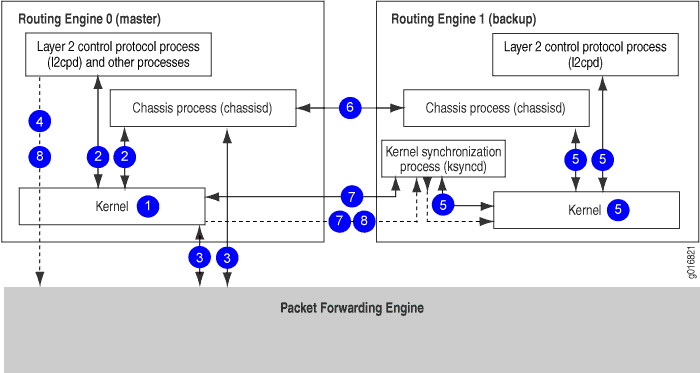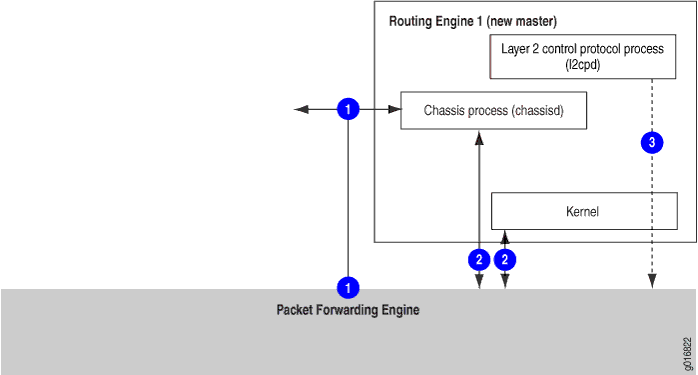Nonstop Bridging Concepts
Nonstop bridging uses the same infrastructure as graceful Routing Engine switchover (GRES) to preserve interface and kernel information. However, nonstop bridging also saves Layer 2 Control Protocol (L2CP) information by running the Layer 2 Control Protocol process (l2cpd) on the backup Routing Engine.
To use nonstop bridging, you must first enable graceful Routing Engine switchover on your routing (or switching) platform. For more information about graceful Routing Engine switchover, see Understanding Graceful Routing Engine Switchover.
Figure 1 shows the system architecture of nonstop bridging and the process a routing (or switching) platform follows to prepare for a switchover.

The switchover preparation process for nonstop bridging follows these steps:
The primary Routing Engine starts.
The routing platform processes on the primary Routing Engine (such as the chassis process [chassisd] and the Layer 2 Control Protocol process [l2cpd]) start.
The Packet Forwarding Engine starts and connects to the primary Routing Engine.
All state information is updated in the system.
The backup Routing Engine starts, including the chassis process (chassisd) and the Layer 2 Control Protocol process (l2cpd).
The system determines whether graceful Routing Engine switchover and nonstop bridging have been enabled.
The kernel synchronization process (ksyncd) synchronizes the backup Routing Engine with the primary Routing Engine.
For supported protocols, state information is updated directly between the l2cpds on the primary and backup Routing Engines.
Figure 2 shows the effects of a switchover on the routing platform.

The switchover process follows these steps:
When keepalives from the primary Routing Engine are lost, the system switches over gracefully to the backup Routing Engine.
The Packet Forwarding Engine connects to the backup Routing Engine, which becomes the new primary. Because the Layer 2 Control Protocol process (l2cpd) and chassis process (chassisd) are already running, these processes do not need to restart.
State information learned from the point of the switchover is updated in the system. Forwarding and bridging are continued during the switchover, resulting in minimal packet loss.
